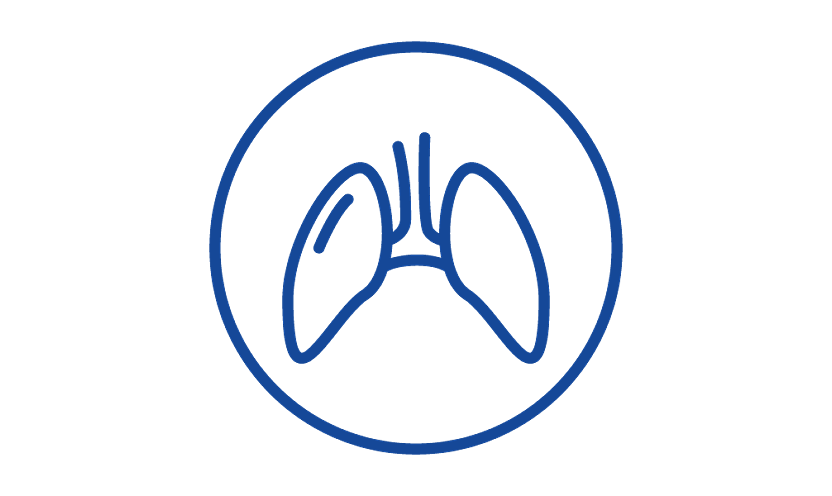Better Care in the ICU Can Help Support Better Care Across the Hospital
The effects of specialized critical care can extend well beyond the ICU. From skin protection to respiratory care to mobility support and more, what starts here matters everywhere. Watch and learn how the Progressa+ bed makes a difference in the ICU, so you can make a difference throughout your patient’s stay — and beyond.
The Impact of a True ICU bed
Progressa+ - A True ICU Bed
Is the Road Trip Necessary?
In this podcast episode, experts discuss the critical importance of keeping care at the bedside in the ICU. They explore the daily challenges faced by ICU caregivers, the complexities of patient transport, and the risks associated with moving critically ill patients. The conversation highlights the benefits of bedside care, including patient outcomes and the vital role of caregivers in providing timely and effective treatment. Through personal anecdotes and professional insights, they emphasize the need for adequate resources and staffing to ensure the safety and well-being of patients in the ICU.
Protect Patients’ Skin
Hospital-acquired pressure injuries (HAPIs) are all too common in the ICU, where patients are often immobile. And these complications are harmful in more ways than one:

They’re Urgent
60,000 patients die every year from pressure injuries.1

They’re Costly
Treating stage III or IV pressure injuries in hospitals can cost an average of $43,000.2,3

They’re Pervasive
170 patients per year will acquire a pressure injury in an average 100-bed facility.4,5
Time in bed may not be avoidable in the ICU — but pressure injuries should be. The Progressa+ ICU bed and its advanced surfaces are designed to help protect your patients’ skin integrity so you can focus on patient care. Explore these educational resources to discover how a true ICU bed can make a difference for patients and care teams.
Help Prevent Skin Breakdown
Discover what factors you should consider when choosing surfaces to help prevent pressure injuries in your ICU.
Reduce Reportable HAPIs by 33% in a Year — Guaranteed*
Hillrom Progressa+ therapeutic surfaces have been shown to help prevent pressure injuries. We guarantee a 33% reduction in reportable HAPIs after one year,* or we will give you 50% of the purchase price back per surface.*

Did you know?
Baxter has sales representatives across the entire country. Check the map for your local Baxter rep today!
Progressa+ Users Have Spoken
We surveyed 60 clinicians using the Progressa+ Accelerate ICU bed in four US facilities. Read what they had to say about its effectiveness in supporting mobility protocols, continuous lateral rotation therapy (CLRT) protocols, percussion & vibration (P&V) therapy and more.
Survey Results: Utilization of In-Bed Percussion & Vibration
A survey was administered in the Med-Surg and Cardiac ICUs of a large academic Level 1 Trauma Center. 78 nurses shared their feedback on in-bed percussion and vibration (P&V) support for chest physiotherapy. Download the infographic for key takeaways including:
- 96% found the P&V feature easy to use
- 57% perceived a decrease in respiratory complications
- An additional 39% also perceived faster mobilization, less ventilation and shorter hospital stays
Impact of Continuous Lateral Rotation Therapy-Enabled ICU Beds on Pulmonary Ventilation
Read how CLRT-enabled ICU beds can help patients at risk for pulmonary complications due to immobility. We also share real-world feedback from Progressa+ ICU bed users on how this true ICU bed helps support their CLRT workflows. For example:
- 87% agreed that the touchscreen panels allow for compliance monitoring for pulmonary protocols
- 64% agreed or strongly agreed that the CLRT preview function makes it easy for clinicians to see how much patients are turning to the left/right while ensuring no lines become obstructed or pulled out during therapy
Addressing Pulmonary Complications in the ICU
Listen as clinical experts discuss common pulmonary complications in the ICU, and share how the latest ICU beds can help you address and prevent them.
Early patient mobility programs are proven to reduce both ICU length of stay and the number of ventilator days.13 Explore how the Progressa+ bed can help you support early mobility from proning to standing — while reducing strain on clinicians.
Prioritize Patient Mobility
Dive into the latest ICU mobility protocols, and learn how a true ICU bed can help you support them.
Help Reduce Patient Falls by 55% — Guaranteed**
The average cost of a patient fall is $62,521. Progressa+ ICU beds help prevent falls with features like a 3-mode bed exit alarm and FullChair positioning. **

Support More In-Bed Procedures
Transporting critically ill patients throughout the hospital has been associated with a wide range of significant complications, including:

Pulmonary Complications
Risk of pneumothorax can more than double during transfer, and risk of atelectasis can nearly triple.14

Hemodynamic Complications
Hemodynamic complications during transfer may include blood pressure changes, heart rate fluctuations and even cardiac arrest.14
Personnel and equipment considerations, of course, are also plentiful.14 How often does the need for imaging or a certain procedure result in delays and risky transfers in your ICU? Get to know how we designed the Hillrom Progressa+ bed to help you perform more procedures in the same room — and the same bed.
- Padula WV, Pronovost PJ, Makic MBF, Wald HL, Moran D, Mishra MK, Meltzer DO. Value of hospital resources for effective pressure injury prevention: a cost-effectiveness analysis. BMJ Qual Saf. 2019 Feb;28(2):132-141.
- Graves N, Birrell F, Whitby M. (2005). Effect of pressure ulcers on length of hospital stay. Infect Control Hosp Epidemiol, 26(3), 293-297.
- Centers for Medicare & Medicaid Services. (2008). Medicare Program; Changes to the Hospital Inpatient Prospective Payment Systems and Fiscal Year 2009 Rates. Fed Regist, 73(161):48433-49084.42 CFR Parts 411, 412, 413, 422, and 489.
- 2014 AHA Data.
- 2013 Hill-Rom IPUP™ Survey. Data on file.
- Krupp A, Ehlenbach W, King B. Factors nurses in the intensive care unit consider when making decisions about patient mobility. Am J Crit Care. 2015;24(800):474-479.
- Papazian L, Klompas M, Luyt CE. Ventilator-associated pneumonia in adults: a narrative review. Intensive Care Med. 2020 May;46(5):888-906. doi: 10.1007/s00134-020-05980-0. Epub 2020 Mar 10. PMID: 32157357; PMCID: PMC7095206.
- Halpern NA, Pastores SM. (2010). Critical care medicine in the United States 2000-2005: an analysis of bed numbers, occupancy rates, payer mix, and costs. Critical Care Medicine, 38(1):65-71.
- Dasta JF, et al. Critical Care Medicine 2005;33(6):1266-71.
- Anderson R. Effects of an electronic health record tool on team communication and patient mobility: a 2-year follow-up study. Critical Care Nurse. 2022;42(2):23-31.
- Anderson RJ, Sparbel K, Barr RN, Doerschug K, Corbridge S. Electronic health record tool to promote team communication and early patient mobility in the intensive care unit. Critical Care Nurse. 2018;38(6):23-35.
- Bergbower EA, Herbst C, Cheng N, et al. A novel early mobility bundle improves length of stay and rates of readmission among hospitalized general medicine patients. Journal of Community Hospital Internal Medicine Perspectives. 2020;10(5):419-425. doi: 10.1080/20009666.2020.1801373.
- Klein KE, Bena JF, Albert NM. (2015). Impact of early mobilization on mechanical ventilation and cost in neurological ICU. Am J Respir Crit Care Med, 191:A2293.
- Knight PH, Maheshwari N, Hussain J, Scholl M, Hughes M, Papadimos TJ, Guo WA, Cipolla J, Stawicki SP, Latchana N. Complications during intrahospital transport of critically ill patients: Focus on risk identification and prevention. Int J Crit Illn Inj Sci. 2015 Oct-Dec;5(4):256-64. doi: 10.4103/2229-5151.170840. PMID: 26807395; PMCID: PMC4705572.
* Based upon customer’s designated clinical area baseline HAPI rate. Customer must meet the eligibility and all other terms and conditions set forth in the HAPI Guarantee Contract.
** Customer must meet the eligibility and all other terms and conditions as set forth in the Fall Reduction Guarantee Contract.


